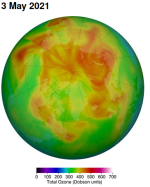repoman
Contributor
I am curious about the long term trial and error diets that extreme northern people from Iceland, all the way around the earth to the Inuits ate to have enough vitamin d and other vitamins that are hard to get at such high latitudes.
Over thousands of years the foods and preparation methods must have built up. Methods that make more vitamins or help make them more adsorbable. This traditional food must be very useful still.
Fermentation is a huge one for sure. As an example, Japanese natto is massively packed with a form of vitamin K2 but that is not that northern.
https://www.healthline.com/nutrition/9-foods-high-in-vitamin-d#3.-Cod-liver-oil
Spruce tips are a source of vitamin C. I have heard that Capt. Cook learned this from the natives.Some here brew beer with it.
https://fungi.com/blogs/articles/place-mushrooms-in-sunlight-to-get-your-vitamin-d
Cool, but not extremely precise article about vitamin D2 production from mushroom exposed to UVB or sunlight (I assume most produced when sun is above 50 degrees from the horizon). Not sure what a good balance of D2/D3 should be. So maybe having tons of these sun dried mushrooms will throw things out of wack.
But did folk cultures sun dry mushrooms for taste and preservation and slowly notice increased health from eating them? The problem with that is it takes a while (but less time than D3) for D2 to go up or down so not a sharp signal for health effects.
Thinking of doing the same on a window ledge, but outside of the UVB blocking glass.



